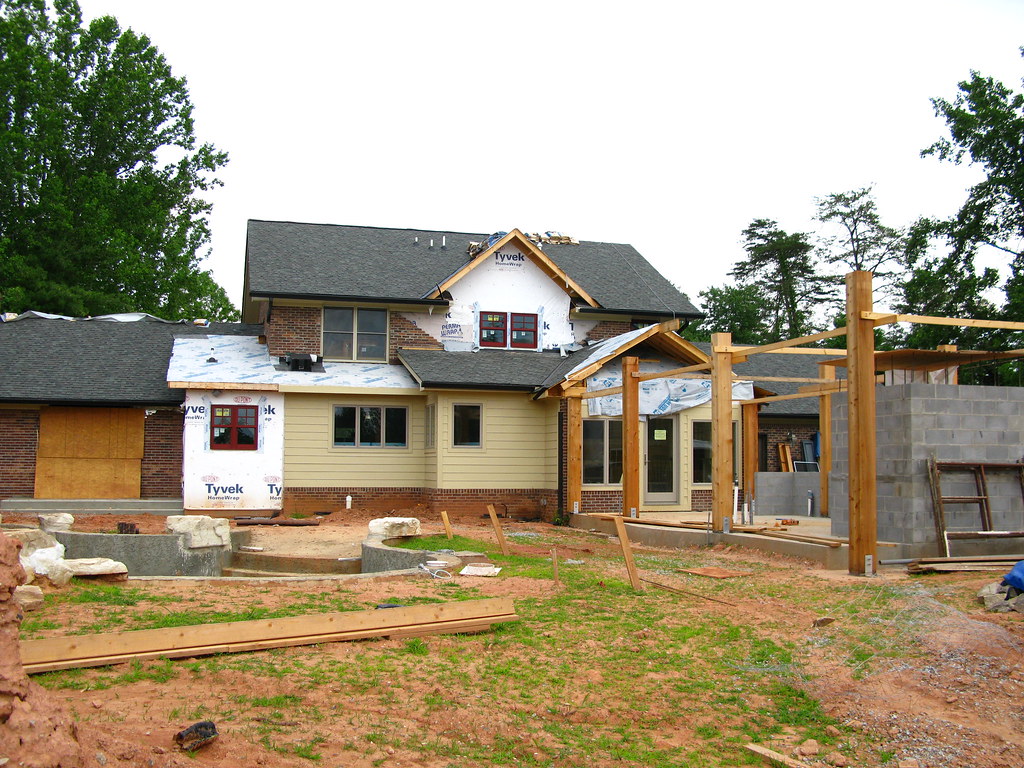- Request Free Quote
- 408-206-0832
- info@baybuildersconstruction.com
How to Plan a Room Addition: A Complete Home Expansion Guide
February 17, 2025As families grow and lifestyles evolve, many homeowners find themselves needing more space. Whether it’s an extra bedroom for a growing family, a dedicated home office, or a sunroom to enjoy the outdoors, adding a room can significantly improve both comfort and property value. A well-planned room addition can transform your home, making it more functional while also increasing its resale value.

However, expanding your home is a major undertaking that requires careful planning, budgeting, and execution. Without the right strategy, a room addition can become overwhelming and costly. This guide will walk you through every step of the process, from choosing the type of addition to budgeting and hiring the right contractor.
At Bay Home Builders, Inc., we specialize in high-quality home expansions that blend seamlessly with your existing structure. With years of experience in home remodeling and construction, we ensure that your new addition enhances both the aesthetics and functionality of your home.
1. Understanding Different Types of Room Additions
When planning a room addition, the first step is to determine what type of space you need. Here are some of the most popular room additions homeowners consider:
Bedroom Addition
Adding a bedroom is one of the most common types of home expansions. Whether it’s for a growing family, a guest room, or a personal retreat, an extra bedroom can add convenience and value to your home. When planning a bedroom addition, consider factors like closet space, natural lighting, and insulation for year-round comfort.
Home Office Addition
With remote work becoming more common, a dedicated home office is a valuable investment. A well-designed office space should include ample natural light, soundproofing, built-in storage, and high-speed internet connectivity to create a productive work environment.
Sunroom or Enclosed Patio
A sunroom or enclosed patio is a great way to enjoy natural light while being protected from the elements. These spaces can serve as reading nooks, entertainment areas, or plant-friendly spaces. To make the most of a sunroom, consider energy-efficient windows, climate control options, and durable flooring.
Garage Conversion
If your garage is underutilized, converting it into a living space can be a cost-effective alternative to a traditional room addition. A garage can be transformed into a guest suite, gym, game room, or even a rental unit. Key considerations include insulation, flooring, ventilation, and ensuring compliance with local building codes.
2. Planning Your Room Addition Project
A successful room addition requires careful planning to ensure it meets your needs while complementing your home’s existing structure.
Assessing Home Layout & Zoning Regulations
Before starting construction, check local zoning laws and building permits to ensure compliance. Some municipalities have restrictions on how much square footage can be added to a property. Consulting with a professional contractor like Bay Home Builders, Inc. can help navigate these regulations smoothly.
Defining the Purpose & Design
Clarifying how the new space will be used helps guide design decisions. Work with a professional designer to ensure that the floor plan, materials, and architectural details integrate well with your home’s existing layout.
For example, if you’re adding a bedroom, you might need additional plumbing for an en-suite bathroom. If you’re building a home office, consider built-in shelves and ergonomic workspace layouts.
Choosing the Right Materials & Finishes
Selecting materials that match or enhance your home’s existing style is crucial. If your house has hardwood flooring, traditional moldings, or a specific exterior finish, the new addition should seamlessly blend in to maintain visual harmony.
For longevity and efficiency, prioritize durable, energy-efficient materials, such as double-pane windows, insulated walls, and sustainable flooring options.
3. Budget Considerations for Room Additions
Budgeting is one of the most critical aspects of planning a room addition. Proper financial planning ensures that you get the best value for your investment without exceeding your financial limits.
Estimating Costs
The cost of a room addition depends on factors such as size, materials, labor, and permit fees. On average:
- A basic bedroom addition can range from $20,000 to $50,000, depending on finishes and square footage.
- A home office addition typically costs $15,000 to $40,000, including electrical and networking setups.
- A sunroom addition varies between $10,000 and $70,000, depending on whether it’s a three-season or four-season space.
- Garage conversions cost $10,000 to $30,000, factoring in insulation, flooring, and electrical work.
Avoiding Common Budget Pitfalls
Unexpected costs can arise during construction, so it’s important to:
- Set aside a 10-20% contingency fund for unexpected expenses.
- Get detailed quotes from contractors to avoid hidden fees.
- Choose cost-effective materials without compromising quality.
Maximizing Cost-Efficiency
To get the best return on investment, focus on:
- Multi-purpose designs – A home office that doubles as a guest room increases usability.
- Energy-efficient solutions – Using LED lighting, solar panels, or smart thermostats reduces long-term utility costs.
- Open-concept designs – This minimizes structural modifications and lowers labor costs.
4. Finding the Right Contractor for the Job
Hiring an experienced and reliable contractor is essential to ensure that your room addition is built to the highest standard. Here’s what to look for when choosing a contractor:
Key Factors to Consider
- Experience and Expertise – Look for a contractor with a strong portfolio of completed home additions.
- Licensing and Insurance – Ensure that the contractor is licensed and carries liability insurance.
- Customer Reviews and Testimonials – Check online reviews and ask for references from past clients.
- Detailed Project Timeline – A reputable contractor should provide a clear schedule and expected completion date.
Why Choose Bay Home Builders, Inc.?
Bay Home Builders, Inc. has years of experience in designing and executing high-quality room additions. Our team of skilled craftsmen, architects, and project managers ensures that your home expansion is seamless, functional, and visually appealing.
With a commitment to outstanding design, affordability, and customer satisfaction, we take pride in helping homeowners transform their living spaces. Whether you’re adding a new bedroom, home office, or sunroom, our team will guide you through every step of the process.
Conclusion
Planning a room addition is a major investment, but with the right strategy, it can greatly enhance your home’s functionality, comfort, and value. From selecting the right type of addition to budgeting wisely and hiring an experienced contractor, careful planning is key to ensuring a successful project.
At Bay Home Builders, Inc., we specialize in seamless, high-quality home expansions tailored to meet your needs. Our expertise in design, construction, and project management guarantees a stress-free remodeling experience.
